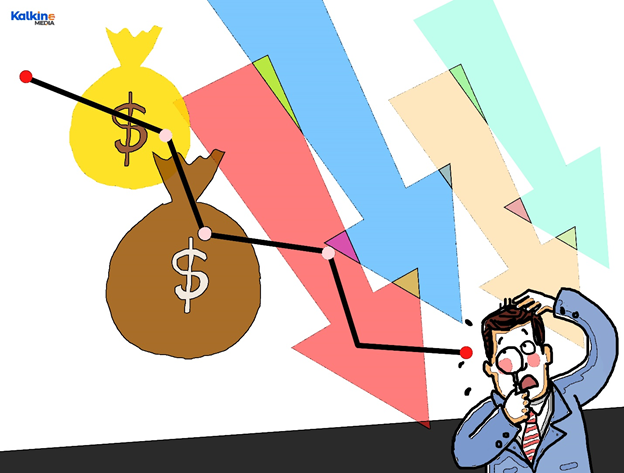What is a take-profit order?
Broadly speaking, take-profit orders are used by traders to maximise their profits, wherein a certain price is specified by the trader above the purchase price. In other words, take-profit order, or (T/P) as commonly referred to, is a limit order that outlines the exact price at which the open position for a profit can be closed. In case the price of the security does not reach the specified limit price, the take-profit order is not fulfilled.
The above-mentioned orders are generally advantageous for those day traders who want to benefit from the quick climb in the prices of the stocks and securities, thereby making quick and immediate profits.
Highlights
- Acting as a type of limit order, a take-profit order is closed when a certain level of profit is made and if it has not been made, then the order is not acted upon.
- Take-profit orders are a short-term strategy, allowing day traders to make quick profits in case of a quick rise in the market.
- These orders minimise the risk exposure of the traders.
Frequently Asked Questions (FAQs)
How to execute a take-profit order?
For using take-profit orders, day traders set a price at which they intend to trade the stock or security. The said price is generally much above the price at which security was bought or purchased by the trader, to ensure that he makes a sufficient profit on offering the specific security.
On reaching the take-profit point, the order is executed, and the sale of the security happens at the current market value during the day. However, if the take-profit point is not reached, the sale of the security is not executed, and the trader keeps the security and not sells it.
What is the relationship between security and take-profit order?
Whenever a stock or security rises and reaches the take-profit point, the take-profit order is implemented, and the position is closed for gain on the specific date.
On the other hand, in case of any drop in the prices of stock or security to the stop-loss point, the stop-loss order is set out and a loss is observed for the position on that date.
Here, it is pointed out that stop orders automatically enable traders to put up their stocks or securities for sale if they drop to a specific price level, thus helping them to prevent losses as soon as the market begins to decline.
What are the benefits of take-profit order?
The take-profit order is quite beneficial under the following circumstances:
- Here, traders need not to worry about manually executing the trade order, while making use of the take-profit order.
- Moreover, irrespective of the behaviour of the underlying security, take-profit orders are executed at the best possible prices. It is not affected by changes in security prices.
- Also, it minimises the trader’s risk as it allows them to cash in the opportunity of the quick market rise.
- For instance, even if the security starts to breakout higher, the take-profit may be executed at the beginning of the breakout, thereby creating higher opportunity costs for the traders.
In other words, as soon as the market reaches a favourable point, traders can limit their risks by exiting the trade and not hovering around.

Source: Copyright © 2021 Kalkine Media
Are there any disadvantages of take-profit orders?
Some of the cons of take-profit orders are enumerated below:
- Take-profit orders are not appropriate for long-term traders who have a huge risk appetite and want to make larger profits in the long run, whereas these orders are a short-term strategy to make some quick profits.
- Further, take-profit orders do not allow traders to benefit from longer-term trends, since as discussed above, they are a small-duration strategy.
What are the requisites for take-profit orders?
Simply putting across, a take-profit order is not an emotional decision to hold or sell a security. It makes use of the profit-loss calculation.

Source: Copyright © 2021 Kalkine Media
Establishing take-profit order makes use of technical analysis of the security or the stock price and the anticipated market movement. For arriving at the best-possible take-profit order, traders make use of some strategies like:
- Chart pattern analysis
- A daily or a weekly pivot point
- An average true range along with an overnight extreme
Who makes use of take-profit orders?
Take-profit orders are operated by short-term traders who want to manage their own risks. In case of any future market downturn, they can opt-out of trade as soon as they reach their planned or estimated profit target.
However, long-term traders are not benefitted from these take-profit orders as they cut into their profits.
Are there any market indicators that help to opt or not to opt for take-profit order?
There are numerous indicators that help in analysing market trends and judging if the take-profit order can be made use of. One such helpful indicator for new traders is the ADX. i.e., average directional index.
It is noted that the ADX reflects how strong a trend is on the scale of 0 to 100. The weaker the trend is, the very possibility of a change is there:
- Any level beneath 20 reveals a weak trend and making use of take-profit orders may be a good idea.
- Levels above 40, reflect a strong trend, and traders should not opt for take-profit orders.
What is the meaning of the term ‘take profit limit’?
Take profit limit is referred to that situation wherein a limit order of either acquiring or trading a security is triggered on reaching the profit price. It is used to protect the trader’s profits on positions.
 Please wait processing your request...
Please wait processing your request...